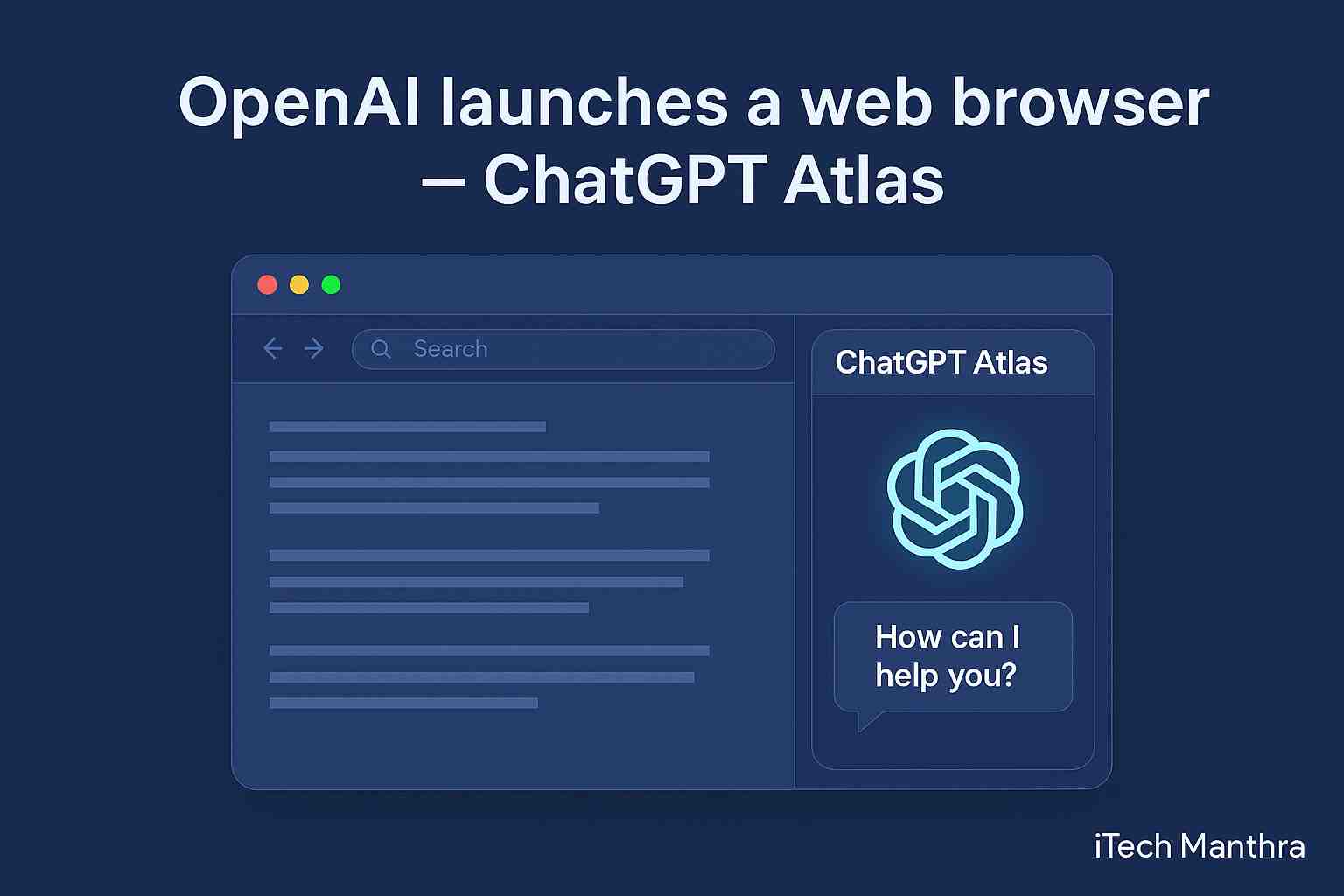Introduction
Have you ever wished your browser would have been cooperative enough to do some work and not just show a page? That time has come. OpenAI has released ChatGPT Atlas, which could be one of the very first browsers of this generation that integrates AI along with day-to-day browsing.
Why is it of importance? Because we are undergoing rapid changes in the search, read, and act paradigm on the Internet. The days of blindly entering queries and opening new tabs are gone. ChatGPT Atlas instead allows you to ask, summarize, and action-all in one premises. It is a brushstroke of AI that has uplifted the crudeness of the Internet into something more human-oriented.
What makes ChatGPT Atlas different from the regular browser?
Well, unlike a regular Chrome, Edge, or Safari, this one was built from the ground up with AI. No more copy-paste between the brave and ChatGPT-the assistant is right there beside your webpages, ready to lend a helping hand.
Here’s what sets it apart:
AI Integrated Sidebar-ChatGPT can understand the page you are in and simultaneously translate, summarize, or answer questions.
Browser Memories-It remembers previous tasks or preferences, which, in turn, renders a human touch.
Agent Mode-Under this mode, ChatGPT applications do product comparison, fill in forms, or carry out research tasks of any kind.
Cross-Device Sync-Import bookmarks, password, and history from your old browser, and feel right at home.
In brief, Atlas is where the internet goes from click-and-read to ask-and-act.
Why is OpenAI launching a browser now?
This could have been more perfect than ever. Search behavior is changing from keyword-based results to conversational interactions. They want answers, not lists of links.
With this launch goes-the-OpenAI-on-the next generation in-browser-assistance. This marks a huge opportunity in direct confrontation with conventional search engines and browsers, which still operate on their ads.
According to many experts, OpenAI is trying to reset the human relationship with the net-as-search-to-action in one flow.
Practical Use of ChatGPT Atlas in the User’s Daily Life
ChatGPT Atlas was designed to be a smarter, faster, and less cluttered browsing experience.
The Good Parts
Time Saver: No flipping windows or tabs to and from civilization for answers.
Hyper-Smart Suggestions: Atlas watches over your activities with permission and offers helpful insights or shortcuts.
Warehouse of Automation: Agent mode automates boring, repetitive tasks for you-price check, scheduling, and researching.
Personal Assistant: It can recall your state of browsing and help you pick up a task without friction.
The Not-So-Good Parts
Privacy Concerns: Depending on the option set, it may keep records of user browsing, and hence users are advised to double-check their privacy settings.
Limited platforms: Atlas has been launched for the macOS users first, and versions for Windows, iOS, and Android will be released soon.
Learning Curve: Every new tool throws a little adjustment period in your way, but then it just gets natural.
Will ChatGPT Atlas take over any browsers like Chrome or Firefox?
Not immediately, but for sure, it has stepped in with new expectations.
Chrome and Firefox currently have their own deep ecosystems for extensions and staunch users. But if Atlas would turn out to be faster, safer, and smarter, then it would start to weld the paradigm in the very thought of browsing.
“Find me three best laptops under ₹70,000,” and the browser instantly gets side-by-side comparisons done-and dusted, no more thinking required. That is what Atlas does.
These could also affect SEO and content marketing because AI-driven browsers can address user queries directly without them having to go through multiple sites.
Now, what does this imply for SEO and content creators?
This is, rather, a call to awakening for online marketers and creators. As browsers like ChatGPT Atlas spring onto the scene and start to provide responses conversationally, Generative Engine Optimization (GEO) is surely going to become an equal partner to the present conventional SEO.
To do that, content should be:
Clearly structured with headings and clear summary lines.
With language an AI system will identify easily.
Optimized for voice or conversational intents.
Built for trust, expertise, and readability.
This shift relates along the lines of topics we have covered along our website. For example, take a look at this conversation of conversational search and how it is set to change SEO, plus another article regarding the rise of AI-powered tools in modern marketing.
FAQs
Q: Is it free to use ChatGPT Atlas?
Yes; all ChatGPT users-even the free tier-are welcome to use it. Having said that, there could be a few advanced features that might be limited to premium users, such as agent mode.
Q: What is agent mode?
[It sounds like] Whatever Agent Mode does, it lets the ChatGPT Atlas act for you-from form filling to product comparisons-so you never need to leave your tab.
Q: Does Atlas keep track of my browsing activity?
Only if you wish it to do so. The “browser memory” is an optional feature, and you may choose the data you wish to share via the client interface.
Q: When will it launch on Windows and Android?
OpenAI has confirmed that Windows, iOS, and Android versions will be rolling out very shortly after the macOS release.
Q: What could firms or creators do to prepare for the AI-based browsing?
Focus on human-centric, structured, and factual content.
Conclusion
ChatGPT Atlas gives the curtain call to the first act of the New Age in web browsing, where simply faster loading or being more featureful doesn’t matter but rather browsing with an application that thinks with you.
Would it outrightly replace Chrome or Safari? Not anytime soon, I suppose. But it is evident that this *is* a step toward a brighter AI-first net where every click becomes a conversation.
From content strategist Nina Lopez: “Browsers may no longer be windows to the web–they’ll become partners in our digital lives.”
To weigh its ripple effect on your SEO or digital strategy, cloggers drop a comment below for work.
